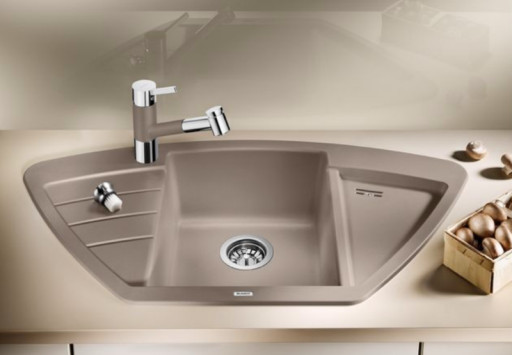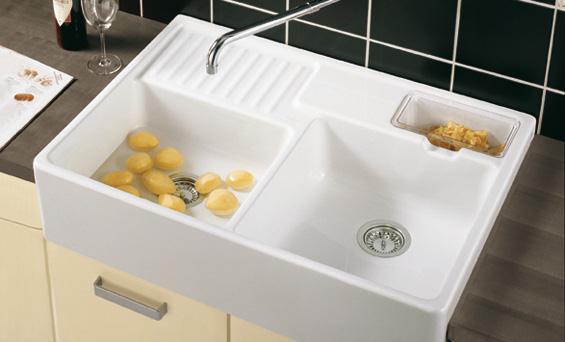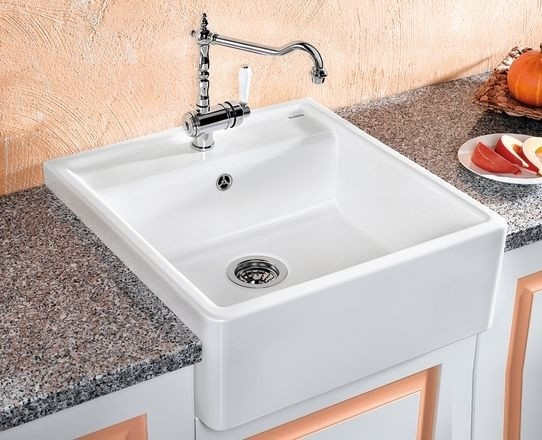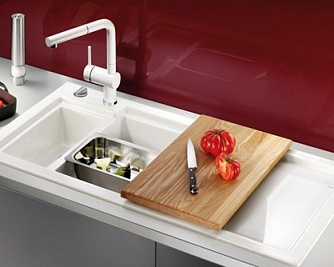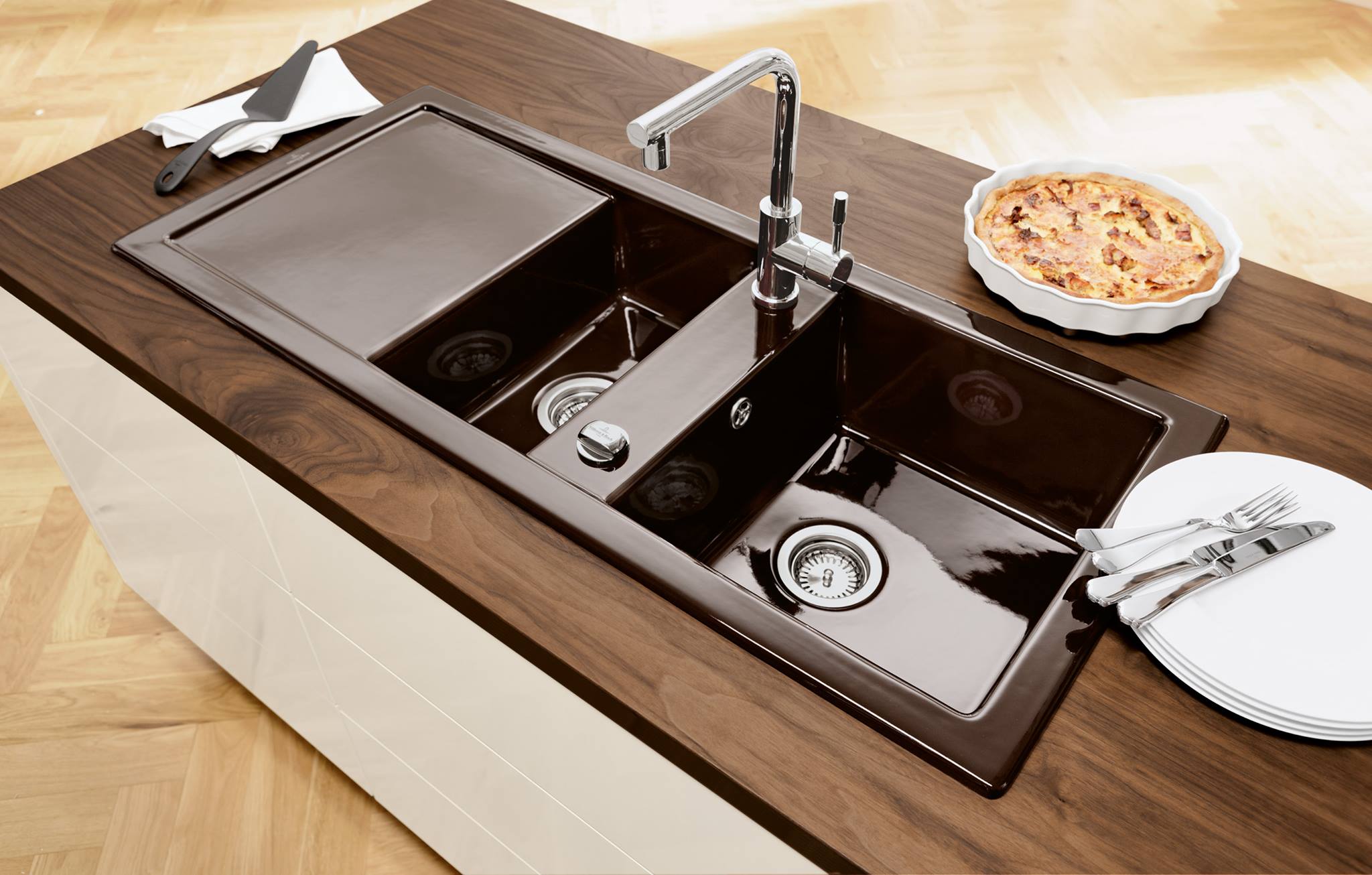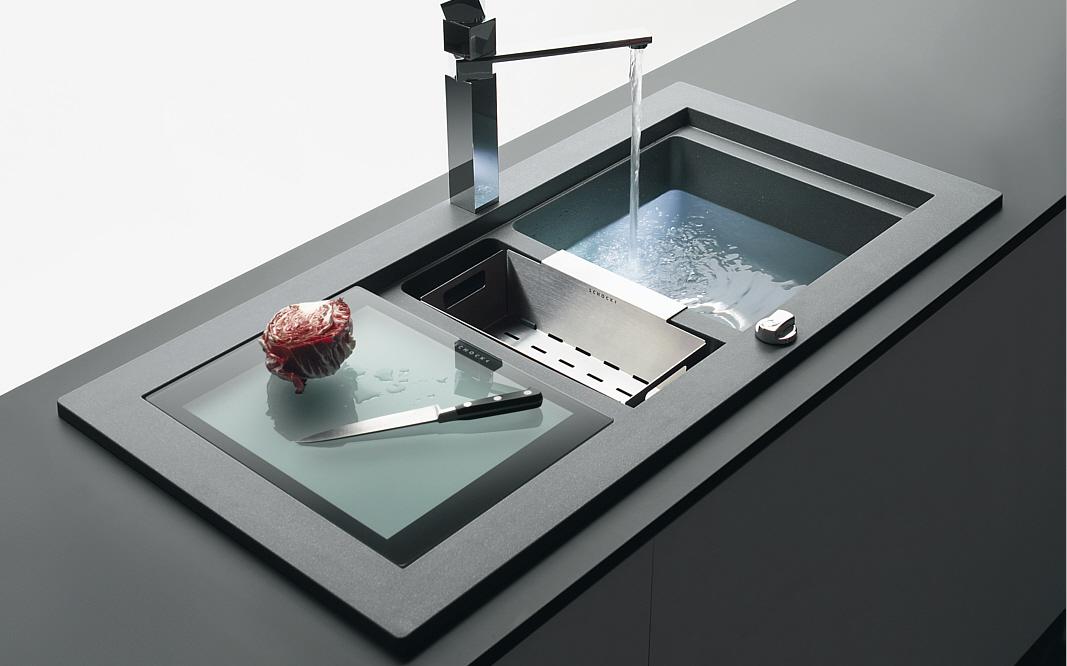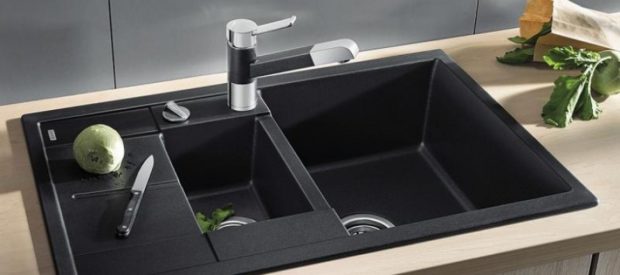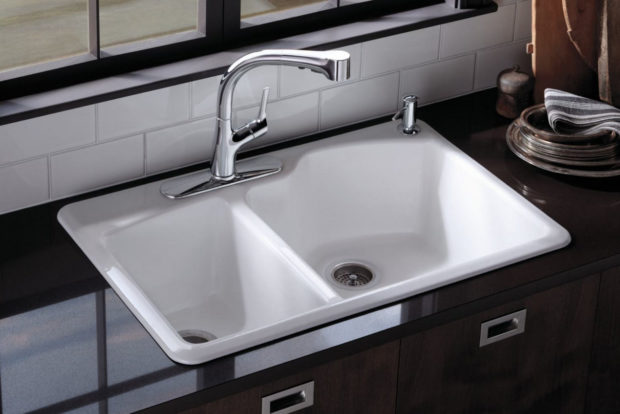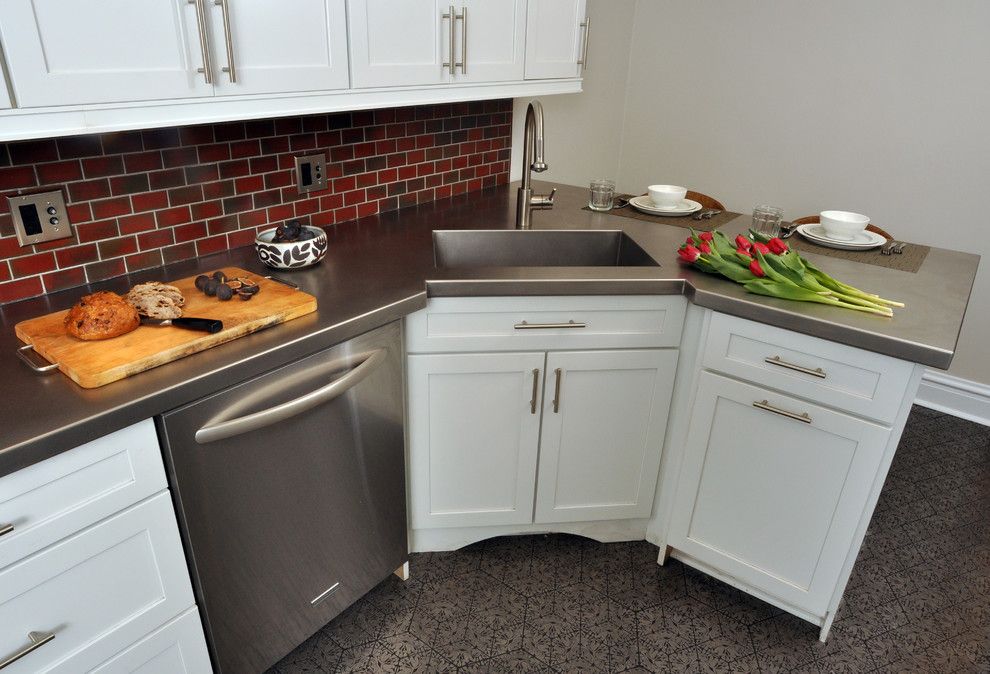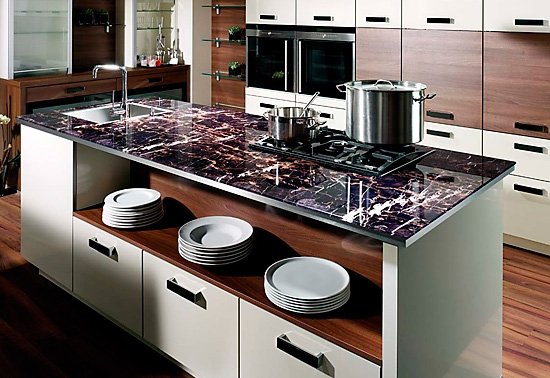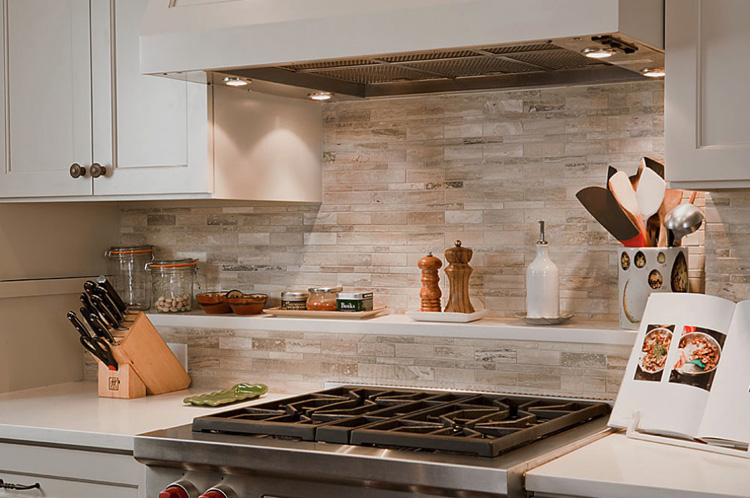Ceramic sink for the kitchen: 9 tips for choosing
There is an opinion that ceramic products have a place only in the bathroom, so it’s hard for someone to imagine that there are kitchen sinks made of ceramics. By the way, in terms of performance, they are not inferior to analogues of stainless steel and artificial stone, and in certain parameters they even surpass them. These are products that combine excellent appearance and excellent functionality, therefore, looking for a suitable sink, be sure to consider this option. We, in turn, will figure out how to choose the ceramic sink for the kitchen and discover the secrets of determining quality products.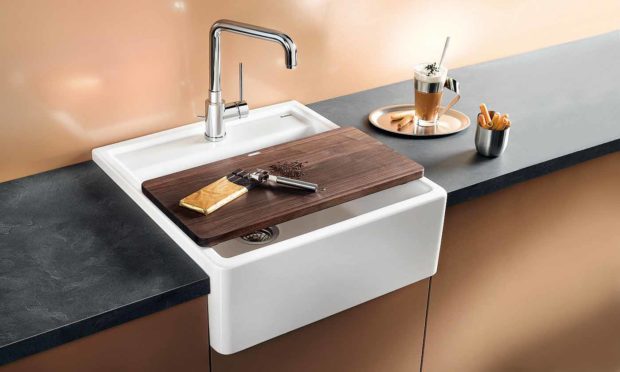
No. 1. Advantages and disadvantages
Ceramic sinks in popularity are seriously inferior to competitors. The reason is not only in price, but also in the fact that many mistakenly consider them impractical and not suitable for the kitchen space. We hasten to debunk myths and list everything The main advantages of ceramic kitchen sinks:
- excellent appearance. Such a sink will be the highlight of the kitchen and will fit into any interior style, since products of any shapes, sizes and colors are produced. There are even patterns with ornaments;
- resistance to high temperatures. The surface of the ceramic bowl will not be damaged by a drop of hot fat, nor boiling water, nor a frying pan and pots, just taken from the fire. The material can withstand temperatures up to +2800C and above, retaining its original appearance;
- resistance to mechanical damage. The dishes are not able to scratch the walls of the ceramic sink, so that the bowl will always look like brand new;
- noise suppression abilityso that the flow of water falling from the tap will not bring discomfort, as is the case with bowls from of stainless steel;
- maximum ease of care. The surface of ceramic bowls is coated with a special composition, thanks to which all impurities literally slide off the surface. Keeping such a wash clean is much easier than steel, so the people jokingly call it a sloth dream;
- durability. With minimal care, a ceramic sink will serve you for decades, while maintaining its original appearance;
- environmental friendliness and naturalness. Ceramic sinks are made from natural ingredients, so that the result is hypoallergenic and completely harmless products that do not emit a specific smell and will not affect the taste of the products.

Ceramic sinks may seem ideal, but they are not. They also have limitations:
- heavy weightthat results in some inconvenience in transportation and installation. It is better to install the product together, and it is better to entrust the work to professionals. Countertop, on which such a sink is installed, must be strong enough;
- falling heavy objects from a sufficient height can lead to the formation of cracks on the surface of the sink, although the material itself can cope with decent weight loads;
- low maintainability. If a crack has already formed, then the sink will have to be changed;
- high price. A ceramic product is several times more expensive than a stainless steel analog of the same size and configuration.It is clear that such a sink looks more interesting, and it wins by a number of characteristics, but not everyone is ready to say goodbye to a tidy sum. In defense of ceramic products, it is worth saying that a durable high-quality product cannot be cheap.

No. 2. Types of ceramic sinks for the kitchen
In publicly available sources today there is a lot of conflicting information on what is still considered ceramic sinks. To separate the lie from the truth, it is necessary to recall that ceramics are products made on the basis of clay with mineral additives by molding, firing and subsequent cooling. Depending on the composition of the clay, the features of its processing and other factors, ceramics is divided into several types. These are faience, porcelain, semi-porcelain, majolica, stone, carbide ceramics, etc. For the manufacture of kitchen sinks, only a few types of material are used.
Most products on the market are made from such types of ceramics:
- faience made from white-burning clays with the addition of quartz sand and chalk. This is a fairly porous material, so it must be coated with glaze. In addition to porosity (this indicates an increased ability to absorb moisture), faience is distinguished by the ability to become covered with a cobweb of cracks over time, so the appearance of such a product deteriorates a little, but such sinks are relatively inexpensive;
- china made on the basis of kaolin, feldspar, sand and other additives. The result is a dense material with extremely low porosity and a smooth glassy surface, so the sinks come out of excellent quality. When tapping, such products give a high sonorous sound. In cost, they, of course, are very different from earthenware products, but in operation they behave much better.

Half porcelain rarely used in the manufacture of sinks. It occupies an intermediate position between faience and porcelain, mainly used for the manufacture of dishes.
Majolica It is used mainly for the manufacture of single samples. Although the water absorption of this material is high (like faience), the surface is smooth and gloss. As a rule, the bowl is painted with colored glaze and becomes the highlight of the kitchen interior. Such products are very expensive, but those who can afford them probably cook in the kitchen infrequently, so you can not pay attention to not the most suitable performance.
Today, it is customary to classify items from ceramic sinks as porcelain tile. Such sinks are made with the addition of granite chips to the ceramic mass, due to which improved product performance is achieved. However, in the manufacture of special additives are used that increase the ductility of the mass and reduce the fragility of the finished product. Staining occurs in bulk or by applying colored ceramic enamel. These are practical and diverse-looking products, the demand for which is constantly growing.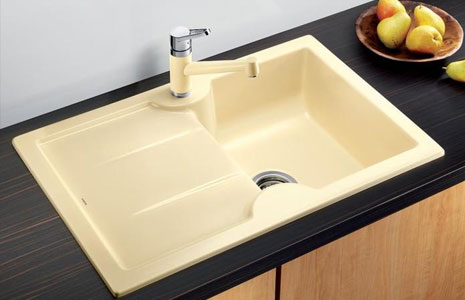
No. 3. Mounting method
Ceramic sinks can be mounted in several different ways, which determines the complexity of the installation and the ability to conduct it yourself. According to the installation method, all ceramic sinks can be divided into three main types:
- waybills. The sink is mounted on a floor cabinet or part kitchen set. Almost everyone can handle the installation, but it is better to work with an assistant, since ceramics are quite heavy material;

- mortise. Such an installation provides for deepening the bowl into the countertop, so the result will be more aesthetic. In the countertop itself, you will have to cut a hole that repeats the shape and size of the bowl. To do this, you can use jigsaw. Then the cut is cleaned and polished. The sink runs on the countertops and is securely fixed from the bottom. The junction of the sink to the countertop must be well treated sealantso that water does not damage the work surface. The installation of this type of sink is best entrusted to professionals;

- integrated sinks do without borders and form a single solid surface with a countertop. Such installation is quite complicated, but the result is unsurpassed.

Number 4. Sink sizes and number of bowls
First of all, attention must be paid to the depth of the product. Bowls are considered standard 15-18 cm deep. They hold quite a lot of dishes, but at the same time you will not have a backache from the need to constantly bend over when washing dishes. Sinks with a depth of more than 18 cm allow you to conveniently wash large pots and pallets, but keep in mind that such a process will not be very comfortable due to back discomfort. Sinks of shallow depth (up to 15 cm) will cause permanent spray problems throughout the kitchen.
As for bowl width or diameter, then it is necessary to proceed from the area of the kitchen and the activity of kitchen processes. The standard width of the sink is 55-60 cm, but you can also find a compact version with a width of 45 cm. If the space allows, you can install a wider sink, however, in this case it will be appropriate to take the product with an additional bowl.
If the kitchen has a dishwasher or you are not cooking very actively, you can get by one bowl. Owners will have to be content with this option. small kitchens. If the place allows, and there is a need, you can take a sink with second bowl. In size, the additional capacity may be smaller than the main one (such products are called sinks with 1.5 bowls) or completely repeat its contours and dimensions (sinks with 2 full bowls). With two sinks it is much more convenient to organize the process of washing dishes and soaking vegetables. There are even models with three sinks, but in everyday life they are used infrequently.
No. 5. Shape and color of the sink
In terms of the variety of colors, ceramic sinks have no problems - you can find almost any shade you need. It is better to choose the color of the bowl to match the countertops or kitchen units. You can, of course, choose a sink of a saturated dark shade for a light countertop, but then it will need to be supported by other elements in the kitchen interior. A special chic is the painted sinks. It is applied manually, covered with glaze and over time remains in its original state. Such products look so chic that it’s even a pity to wash the dishes in them.
In terms of forms There are also many options:
- square sinks - this is the most popular option, owing to its wide distribution of spaciousness along with compactness. As a rule, the corners in such bowls are rounded;
- rectangular sinks are perfect for kitchens with a narrow countertop;
- round sinks look quite interesting, but a round bowl with a diameter equal to the width of a square bowl will be less spacious;
- corner sinks often made in the form of a segment or trapezoid. They allow you to effectively use the kitchen space, because often the potential of the corners is not revealed as it should;
- sinks of fantasy shapes will decorate the interior, but in the pursuit of aesthetics it is important not to forget about functionality - the bowl should be convenient to use for its main purpose.
On one side or on both sides of the sink may be wingswhich are intended for drying dishes and vegetables. This is a convenient option, but if the kitchen cannot boast of too square meters, you may have to take a sink without wings or choose the one with the minimal wings.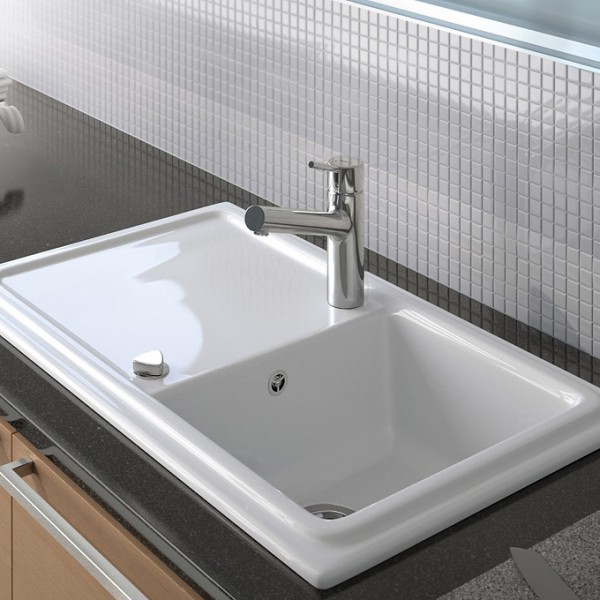
No. 6. How to check product quality?
Of course, it is better to take such an expensive product in a store of a certain manufacturer or in a large construction supermarket, but even in this case, someone will certainly doubt the quality of the sink being bought. What can we say about those cases when a purchase is made in a place much more dubious. Here you can’t do without verification, and conducting it is very simple.
When you go to the store, grab a pencil with you.It will be needed in order to lightly tap on the product. If the result is a loud high-pitched sound, then the product is high-quality, if it is deaf, then there are likely cracks inside, which means that such a wash will not last long.
Number 7. Accessories for ceramic sink
Many companies involved in the production of ceramic sinks produce a whole range of accessories for them, greatly simplifying the life of the hostess. In addition to washing, you can buy:
- cutting boards, the size of which exactly matches the parameters of the sink. Due to such boards the usable working area is increased, and meat and fish cutting will be much more convenient;

- colander - this is a bowl with an opening at the bottom, which clings to the countertop with small sides, and in size it completely corresponds to the sink bowl. Colander is necessary to ensure the outflow of water during drying vegetables or defrosting meat;
- drying baskets used for convenient placement of dishes, greens and vegetables for their further drying;
- waste shredder Designed for crushing food debris and other debris before it enters the sewer. With the help of such a device, it is possible to avoid sewage blockages, or at least reduce the frequency of such troubles;
- filter for water installed under the sink and allows you to clean tap water. Purified water is supplied using an additional mixer.
As for the appearance mixer, then you can choose a model that will be fully or partially covered with ceramics. However, you can stop at the usual chrome-plated mixer or choose an option for bronze, gold or brass. Such unusual cranes will need to be supplemented with other interior elements, for example, to perform railing and handles on cabinets in the same style and color.
Number 8. Care Features
The surface of the ceramic sink is smooth so that the dirt does not linger on it. To keep the bowl clean, it is enough to wipe it with a damp sponge after each use. If pollution does form on the surface, then you can act in one of the following ways:
- use a creamy or liquid detergent with which to treat the contaminated area;
- from limescale You can get rid of by wiping the surface with a cloth dampened with table vinegar. Let the sink stay in this state all night, and in the morning, with water and a sponge, vinegar is thoroughly washed off the surface;
- Chlorine bleaches will help to cope with the most difficult spots and at the same time to disinfect the surface.
Do not use products with abrasive particles that leave small scratches on the sink and gradually dull its surface.
No. 9. The best manufacturers of ceramic sinks
Do you want to get a guaranteed quality ceramic sink in the kitchen? Then pay attention only to products verified companieswho carefully monitor the production process, exercise control and give a guarantee on their products. You can recommend the products of the following companies:
- Franke, Switzerland. Along with other kitchen products, sinks are made from various materials. The company calls ceramic sinks from the patented Fraceram material (in fact, porcelain) more durable, hygienic and durable than steel counterparts. The assortment of the manufacturer is chic. Here they pay attention not only to quality, but also to design. There are accessories on sale;
- Blanco, Germany. The company uses exclusively natural materials, which in combination with innovative technologies allow us to create practical, durable and safe products. There are many options in form, color and layout. Prices are not low, but more affordable than competitors;
- Reginox, Germany. Makes ceramic sinks in basic shades for one and two bowls. Quality is German.
Once again, we remind you that when buying, you should ask about the warranty period and take a look at the accompanying documentation. If you are not confident in your abilities, then it is better to entrust the installation to professionals.


